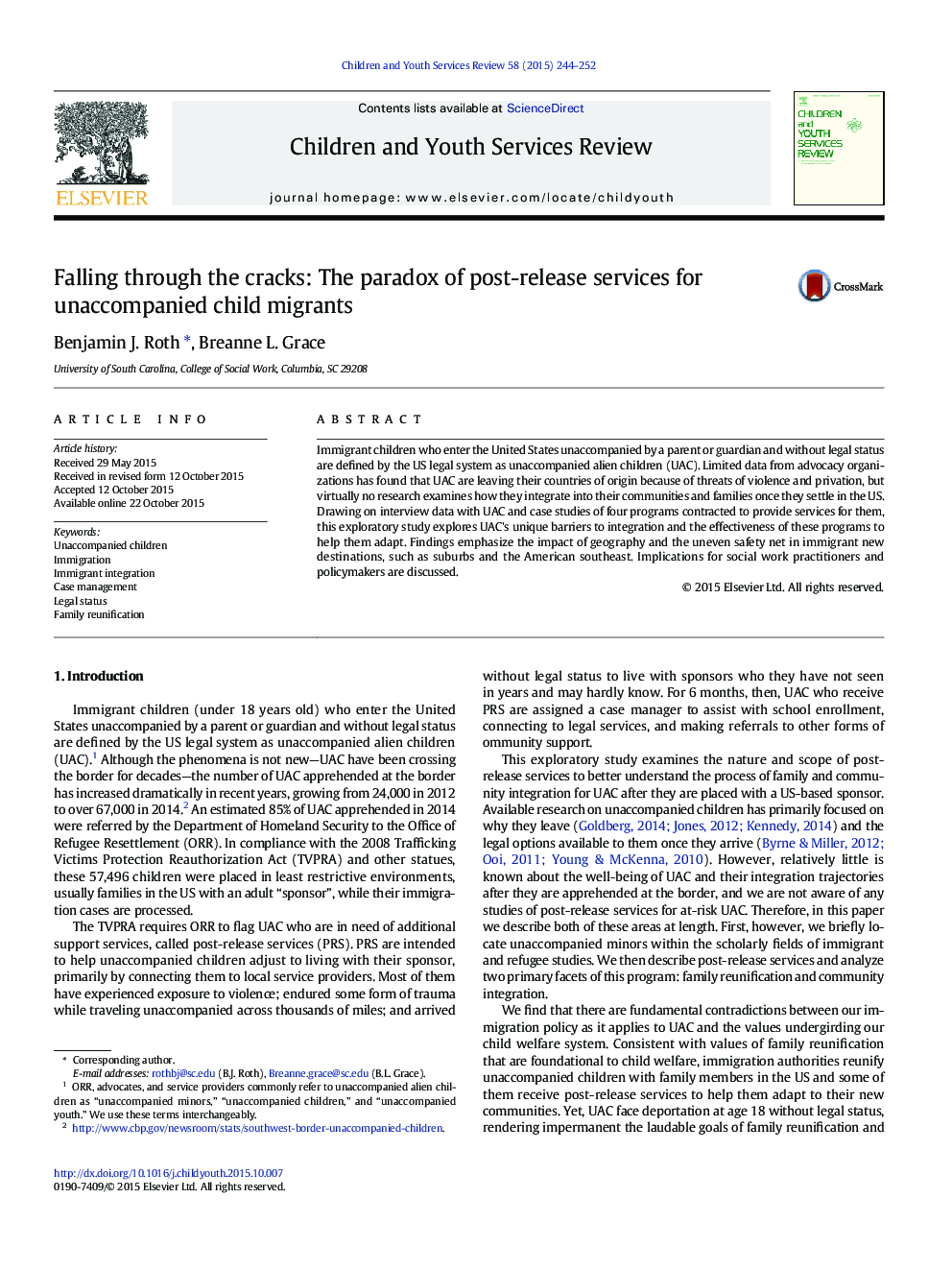| Article ID | Journal | Published Year | Pages | File Type |
|---|---|---|---|---|
| 345940 | Children and Youth Services Review | 2015 | 9 Pages |
•A growing number of immigrant children have entered the US without the accompaniment of a parent or guardian, most from Mexico and Central America.•Unaccompanied immigrant children are primarily leaving because of gang violence and poverty, and most seek to reunify with family members in the US.•After being apprehended at the border, some are identified as “at risk,” placed with a sponsor in the US, and given post-release services.•This study evaluates the integration process for children who receive these services in four different states.•We find that post-release services can improve integration, but the problems are complex and service impact varies across local context.
Immigrant children who enter the United States unaccompanied by a parent or guardian and without legal status are defined by the US legal system as unaccompanied alien children (UAC). Limited data from advocacy organizations has found that UAC are leaving their countries of origin because of threats of violence and privation, but virtually no research examines how they integrate into their communities and families once they settle in the US. Drawing on interview data with UAC and case studies of four programs contracted to provide services for them, this exploratory study explores UAC's unique barriers to integration and the effectiveness of these programs to help them adapt. Findings emphasize the impact of geography and the uneven safety net in immigrant new destinations, such as suburbs and the American southeast. Implications for social work practitioners and policymakers are discussed.
